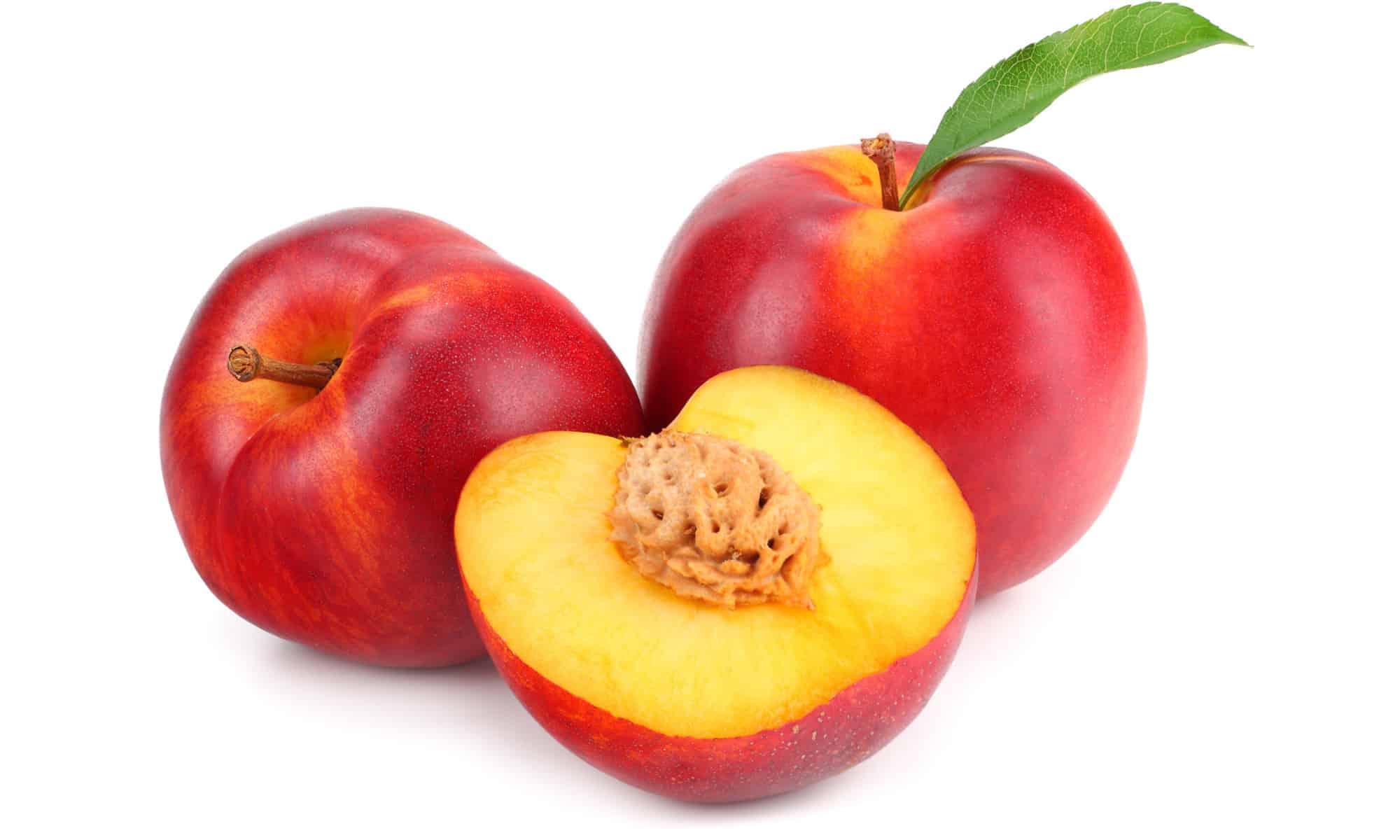Can dogs eat nectarines? Nectarines are packed with vitamins and minerals and are a super healthy snack for humans as well as a being a useful ingredient for many dessert recipes.
But, can dogs eat nectarines safely? Are nectarines good for dogs?
Yes, dogs can eat nectarines as a treat but only small quantities of fresh nectarines that you have prepared by removing the pit. They cannot eat tinned nectarines or nectarine flesh that has started to decompose.
Can Dogs Eat Nectarines?
Dogs are omnivores and can eat a range of foods. Their digestive system are able to digest protein from animals, fish and plants. They can also digest carbohydrates and fats so they can enjoy a varied diet. Fruit can be a useful component of your dog’s diet and many dogs enjoy both the texture and taste of fruit. However, that does not mean that all fruit is safe for dogs to eat. For example, dogs should never eat grapes. Strawberries, on the other, can be safely enjoyed in moderation by our four-legged friends.
Are nectarines good for dogs? Nectarines would be classed as safe for dogs to eat but there are a few things that you need to be aware of before you feed nectarines to your dog.
Why Nectarines Are Good for Dogs
Nectarines provide plenty of nutrients and micro-nutrients that are of benefit to dogs. Here are some of the main ones.
- Vitamin A: Nectarines provide plenty of Vitamin A which is essential for healthy skin, muscles, nerves and teeth. A lack of Vitamin A can even cause night blindness in pups.
- Magnesium: Nectarines also contain a lot of the mineral magnesium. This is needed for dogs to maintain healthy bones, and to help their body absorb essential vitamins. The only dogs that cannot have a lot of magnesium are those with kidney issues.
- Potassium: Potassium is provided by nectarines and this is essential for many aspects of a dog’s metabolism. For their nerves, muscles and enzymes to work efficiently, they need enzymes.
- Dietary Fiber: Nectarines are rich sources of fiber and this is needed to keep food moving efficiently through the digestive system. A lack of fiber can cause intestinal issues in dogs including constipation. However, they can also have too much of it, so you need to moderate their intake.
- Vitamin C: Vitamin C is another nutrient that dogs need in small quantities. It is essential for the immune system and it stops harmful chemicals in the environment, called free radicals, from causing inflammation and damage. It may even help to prevent cognitive decline in older dogs. However, if a dog has too much Vitamin C it can result in diarrhea.
- Sugar: Fruits taste sweet, which is why we and our dogs like them. The downside to this is that the sugar that gives the pleasant taste can also lead to health problems if too much of it is consumed. Foods with a high sugar content can cause gastrointestinal upsets and even vomiting and diarrhea. It is also thought that dogs can get a sugar rush a bit like humans which can make them seem hyperactive. Over the long term, a high sugar diet can lead to both obesity and diabetes in dogs and also causes tooth decay and dental disease.
When Nectarines Are Bad for Dogs
You need to be careful about how you feed nectarines to your dog because under certain circumstances they can be harmful. Here are the things that you need to avoid
Canned Nectarines
Any sort of canned fruit will be loaded with sugar because it is usually part of the preservation process. In fact, most preserved fruit contains preservatives, sugar and possibly colors too. All of these are bad for dogs.
Nectarine Pits
Nectarine trees belong to the Prunus family of plants which is the same as the cherry tree. As is the case with cherries, the pit contains small amounts of cyanide and this can cause poisoning in dogs. It is also a potential choking hazard as it is just the right size to get stuck in a dog’s throat. Therefore, you need to carefully remove all of the pit before giving a nectarine to your dog.
Cyanide poisoning affects the way in which the body uses oxygen and a dog with cyanide poisoning will show symptoms within 20 minutes of swallowing the nectarine pit. Look out for symptoms such as difficulty breathing, red mucous membranes, tremors and dilated pupils. Sadly, dogs can quickly go on to develop convulsions and can die so it is vital that you get them to a vet straight away. Remember it will take less cyanide to cause problems for a smaller dog that a larger one.
Rotten Nectarines
Whilst you may refuse to eat a rotten nectarine, we need to remember that dogs have a scavenging heritage Some dogs will eat anything including their own poop so they will certainly have a taste for rotting nectarines. Sadly, rotting fruit contains ethanol, it is produced as part of the decomposition process. Ethanol is toxic to dogs. Therefore, it is important to keep dogs away from rotting nectarines.
What to Do if Your Dog Eats Nectarine
If your dog has eaten a small amount of nectarine flesh, there is nothing to worry about. However, if they have eaten a whole nectarine (including the pit) or the rotten flesh of a nectarine you should contact your vet right away and ask for advice.
As well as the risk of cyanide poisoning, there is a chance that the pit could cause an intestinal obstruction and this may not be apparent for up to 24 hours. You will need to watch your dog carefully over this time.
How to Feed Your Dog Nectarine
It is perfectly okay to give your four-legged friend small pieces of nectarine as a treat. You could hand feed them to your dog and use them during a training session. Your dog will consider them a high value treat and will probably be very obedient to get them!
Alternatively, you could put a few small pieces into a chew toy such as a Kong and your dog will happily spend half an hour getting them out!
Don’t forget that all fruit is full of sugar so it is a good idea to brush your dog’s teeth with a special dog toothpaste after they have eaten the nectarine.
How to Stop Your Dog From Eating Nectarines
Your dog should only be eating nectarine that you have given them and should not be helping themselves to it from the kitchen counters, dining table or trash can! This sort of behavior is what leads to poisoning, choking and intestinal blockages. Here are some ideas on how you can stop that from happening.
- Deter your dog from eating human food. Things like feeding your dog from your plate only encourages them to help themselves when you are not looking! Try to stop all members of the family from doing this.
- Useful training techniques. Teach your dog the ‘leave it’ command and train them not to pinch food from the kitchen counters. There are plenty of useful training books that can help with this.
- Ensure your dog is not hungry. High quality premium dog foods keep dogs feeling fuller for longer because they have healthy carbohydrates and lots of protein. Avoid cheaper foods with fillers that will not keep your dog satisfied for long. This will to stop them from scavenging human food.
- Keep your dog away from waste food. Make sure that you keep waste human food in a trash can with a securely fitting dog-proof lid. Also, steer your dog away from discarded food on the sidewalk using a head halter if you need to.
For your convenience, we’ve rounded up the top products referenced above:
 Check Chewy Check Amazon
Check Chewy Check Amazon- Great choice for aggressive chewers
- Made in the USA
- Super-sturdy construction
- Trusted brand with quality materials
- Available in medium and large sizes
- Hide treats in the treat compartment
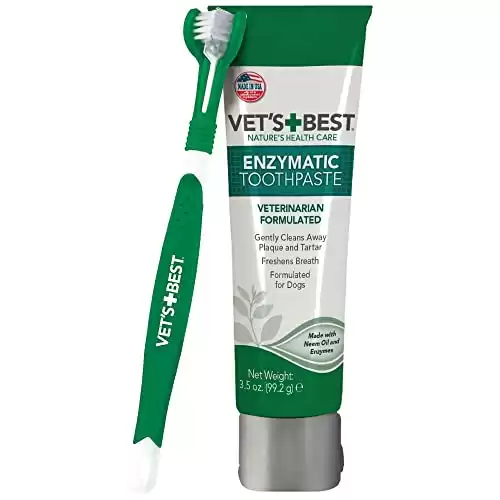 Check Amazon
Check Amazon- Includes everything that you need
- The brush is simple yet effective
- Gel will remove tough tartar
- Contains aloe, neem oil, and baking soda
 Check Amazon
Check Amazon- Very durable training whistle
- Made of brass and nickel-plated
- The frequency can be adjusted
- Can be heard for up to 400 yards
 Check Amazon
Check Amazon- Great reading experience
- Lots of practical tips
- Include fun games
- Written by YouTube star Zak George
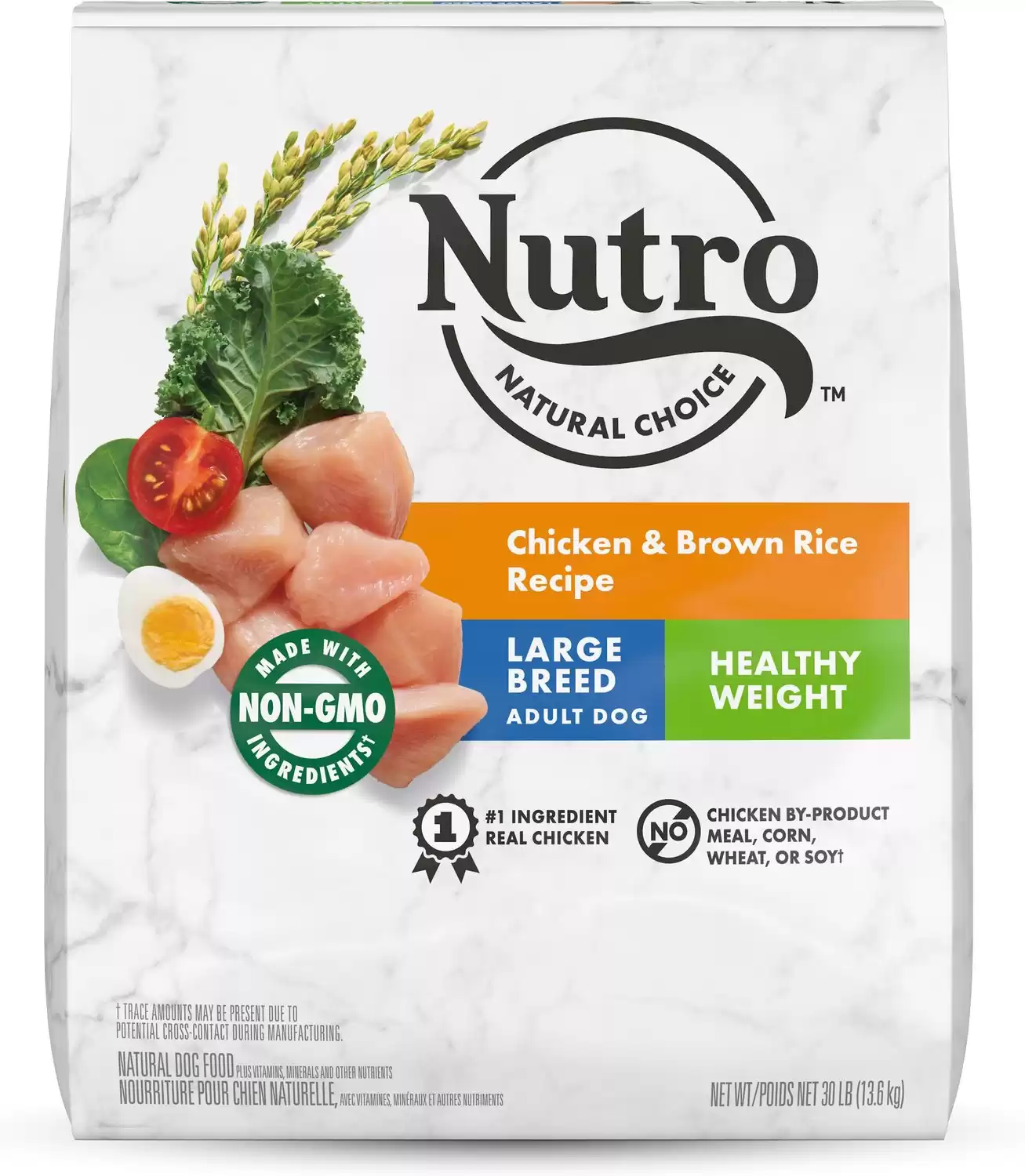 Check Chewy Check Amazon
Check Chewy Check Amazon- Budget-friendly option
- Contains lentils, chicken, and sweet potatoes
- Packed with amino acids and glucosamine
- Made with non-GMO ingredients
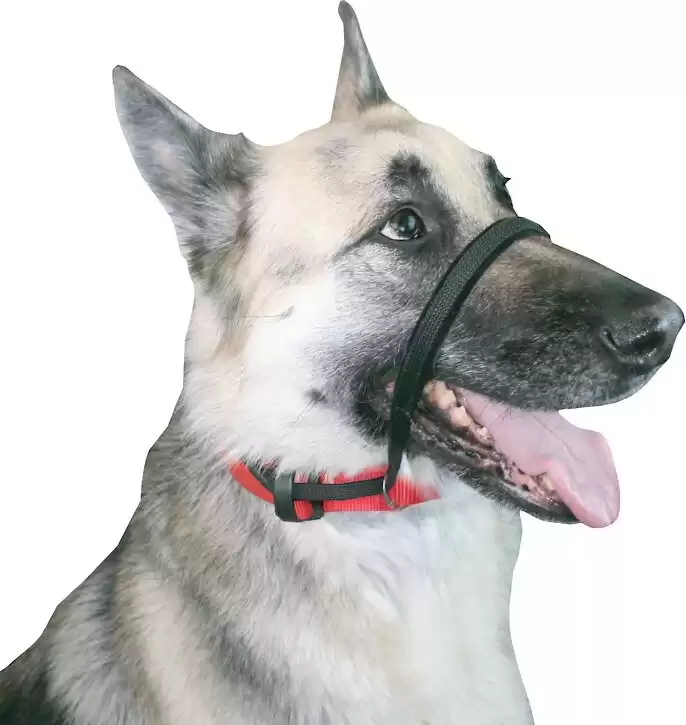 Check Chewy Check Amazon
Check Chewy Check Amazon- Perfect for dogs that are pulling very badly on the leash
- Provides immediate correction
- Comfortable and easy to put on
- Recommended by vets
What Does Cyanide Poisoning Look Like in Dogs?
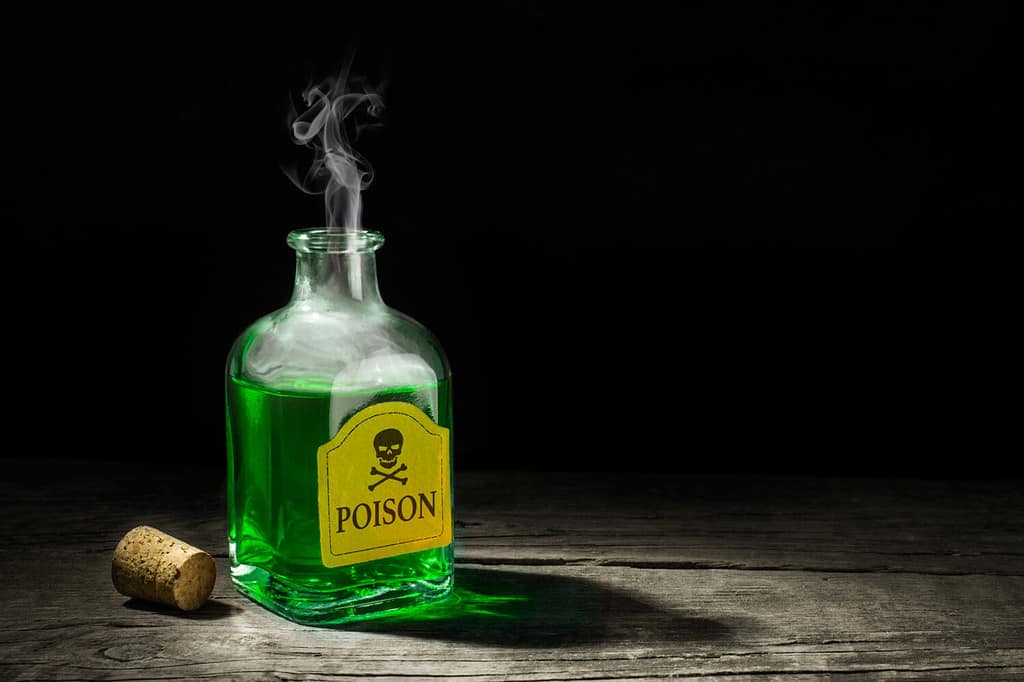
There are some indicators to look for if you think your dog has been poisoned.
©ADragan/Shutterstock.com
While we are talking about being wary of what foods your pup should and should not eat, let us take a look at something that means a different kind of trouble: cyanide poisoning.
First, what is so dangerous about cyanide? This substance is detrimental to an animal’s tissues. Cyanide will actually decrease capability to utilize life-essential oxygen, essentially suffocating the cells.
Now that we know the danger of cyanide, how do we watch out for it? The bad news is that cyanide resides in plenty of items that you and your pets are often near. One obvious thing to watch out for is rat poison, which is very harmful. These are also known as rodenticides.
Another type of product to be on the lookout for is some lawn care products and fertilizers. Soil sterilizers are among them as well. Fertilizers are fairly well known to be somewhat dangerous, but it is always good to be reminded.
Probably the most surprising would be if your dog ate some plants that contained cyanide. This can happen by accident, of course, but it also is a well-known culprit for malicious use.
With that being said, be watchful for your furry friend. Signs of cyanide can be seen within twenty minutes of ingestion. You might see erratic actions and increased heartbeats. Your dog’s mucus membrane can even turn blue if they have been poisoned. It only takes 45 minutes or less for death to occur, but if your animal lives past a couple of hours they are probably in the clear!
Ready to discover the top 10 cutest dog breeds in the entire world?
How about the fastest dogs, the largest dogs and those that are -- quite frankly -- just the kindest dogs on the planet? Each day, AZ Animals sends out lists just like this to our thousands of email subscribers. And the best part? It's FREE. Join today by entering your email below.
Thank you for reading! Have some feedback for us? Contact the AZ Animals editorial team.

